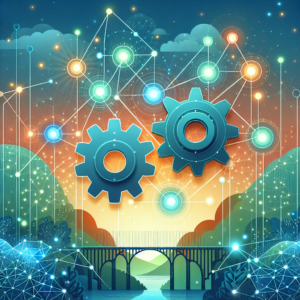Continuous Improvement (Kaizen): Cultivating a Growth Mindset
Welcome to a journey of endless possibilities! 🚀 Today, we’re diving into the world of Continuous Improvement, or Kaizen, and discovering how it can help cultivate a growth mindset. Whether you’re a business leader, an entrepreneur, or someone looking to improve personally, Kaizen offers a pathway to success and fulfillment.
Table of Contents
1. What is Kaizen?
2. The Principles of Kaizen
3. How Kaizen Cultivates a Growth Mindset
4. Implementing Kaizen in Daily Life
5. Conclusion
6. FAQs
What is Kaizen? 🤔
Kaizen is a Japanese term that means “change for better” or “continuous improvement.” It’s a philosophy that emphasizes small, incremental changes over time, leading to significant improvements. Originally applied in manufacturing, Kaizen is now used across various industries and personal development domains. The idea is simple yet profound: by consistently making small improvements, we can achieve big results.
The Principles of Kaizen 🌟
Kaizen is built on several key principles:
1. Continuous Improvement
Always strive to do better. Even when things are good, there’s room for improvement. This mindset encourages ongoing learning and adaptation.
2. Employee Involvement
In a business context, Kaizen encourages everyone to contribute ideas for improvement. It’s a collective effort that values each person’s input.
3. Standardization
Once an improvement is achieved, it’s standardized to ensure it becomes part of the regular workflow or routine.
4. Customer Focus
Understanding and delivering what the customer needs and values is a fundamental part of the Kaizen process.
How Kaizen Cultivates a Growth Mindset 🌱
A growth mindset is the belief that abilities and intelligence can be developed with effort and time. Here’s how Kaizen aligns with and fosters this mindset:
Embracing Challenges
Kaizen encourages viewing challenges as opportunities to learn and grow. It’s about welcoming problems as stepping stones, not obstacles.
Focusing on Process Over Results
Instead of being solely result-driven, Kaizen values the journey of improvement. This aligns perfectly with a growth mindset, where the focus is on learning and development.
Encouraging Feedback and Adaptation
Regular feedback is a cornerstone of Kaizen. By constantly seeking input and adapting, you cultivate resilience and flexibility — key components of a growth mindset.
Implementing Kaizen in Daily Life 🌈
You might be wondering, “How can I bring Kaizen into my everyday life?” Here are some actionable steps:
Start Small
Choose one area you want to improve, whether it’s personal fitness, time management, or learning a new skill, and focus on small, consistent actions.
Set Clear Goals
Define what success looks like for you and break it down into achievable steps. This will help maintain motivation and clarity.
Reflect and Adjust
Regularly review your progress. Reflect on what’s working and what isn’t, and be open to making necessary adjustments.
Conclusion 🎉
Kaizen and a growth mindset go hand-in-hand, offering a powerful framework for personal and professional development. By embracing continuous improvement, you’ll not only enhance your skills and capabilities but also enjoy a more fulfilling journey. Remember, it’s the small steps that lead to big changes!
FAQs
What are some examples of Kaizen in daily life?
Examples include improving your morning routine for better productivity, setting a reading goal, or organizing your workspace for efficiency.
How can businesses implement Kaizen?
Businesses can hold regular team meetings to discuss improvements, encourage employee suggestions, and apply incremental changes to processes or products.
Is Kaizen suitable for personal development?
Absolutely! Kaizen can be applied to any area of personal growth, from learning a new language to developing healthier habits.
How long does it take to see results from Kaizen?
Results can vary, but the key is consistency. Even small improvements can lead to significant changes over time, so patience is essential.











